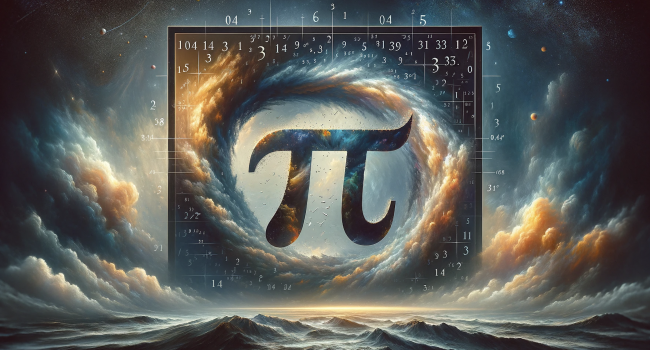ππ β π , the never-ending number

Who among you celebrated Pi Day this week? Indeed, last Thursday, March 14th, Pi Day was celebrated, an international day dedicated to π, that is, the 3.14 that appears in every mathematics book and, crudely put, expresses both the ratio of the circumference's length to its diameter and the area of a circle with a unit radius – in addition to appearing in so many mathematical relationships of the nature around us!
This day was established by American physicist Larry Shaw in 1988 when, at the San Francisco Exploratorium where he worked, he organised the first edition of Pi Day. It's not hard to see why the day falls precisely on March 14th: in American notation, this date is written 3/14, hence 3.14.
What's interesting is that Pi was already known by various ancient civilisations, like the Babylonians and the Egyptians, for example, who had come close to the number 3.14. The former, in fact, expressed π as 25⁄8, that is, π=3.125; while the latter had calculated it to be π=3.1605. In the case of the Egyptians, we know this thanks to the Rhind Papyrus, the most extensive Egyptian mathematical papyrus that has come down to us, written in 1650 B.C. during the 15th dynasty and inspired by an even older text dating back to the 20th-18th centuries B.C. Today, this papyrus is located at the British Museum.
Pi is one of the most important irrational numbers, that is, those numbers that cannot be expressed as the ratio of two integers. Therefore, as you may remember from school, 3.14 is only a crude approximation since, in reality, we are talking about 3.14159265358979323846… and it goes on infinitely. For some years now, universities around the world have been competing to express the largest number of digits after the decimal point.
The applications of the well-known π are countless and span various fields of science starting, obviously, from geometry applied in architecture for the construction of arches and domes, through the calculations necessary for determining the distances between planets or electromagnetic curves, and much more.
If this post has interested you, then you're ready for:
- the documentary “Decoding the Secret Patterns of Nature - Fibonacci Ratio & Pi” produced by Nova, which you can find here: https://lnkd.in/eJG4KikW;
- Darren Aronofsky’s film “Pi – π” from 1998. You can find the trailer here: https://lnkd.in/eDAHXh2j.
Long live π!
Photo: created by AI.

















